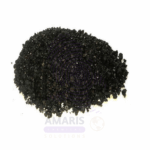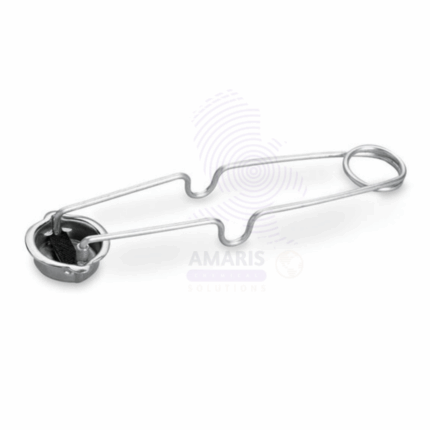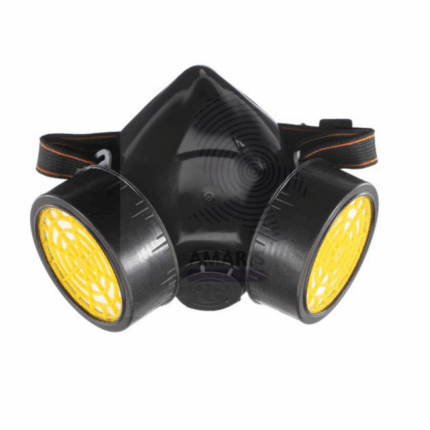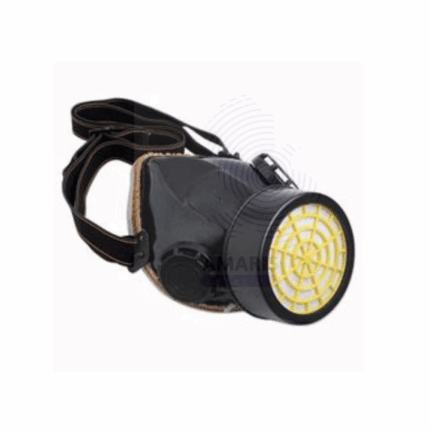Lab Coat
$ 19.15 Original price was: $ 19.15.$ 19.05Current price is: $ 19.05.
Whatsapp Order
A Lab Coat is a protective garment worn primarily in laboratory, medical, and industrial environments to safeguard the wearer’s clothing and skin from hazardous substances, chemical splashes, biological contaminants, and other workplace hazards. Typically made from durable, breathable, and sometimes flame-resistant fabrics such as cotton, polyester, or blended materials, lab coats provide an essential barrier during experiments, clinical work, and manufacturing processes. Designed with a comfortable fit and functional features like pockets and button or snap closures, lab coats promote safety and professionalism in various laboratory and healthcare settings.
Description
Table of Contents
Toggle
Lab Coat
Primary Uses
- Laboratory and Medical Applications
- Protects wearer from chemical splashes, spills, and contamination during experiments and procedures.
- Acts as a barrier against biological hazards such as bloodborne pathogens and infectious agents.
- Used in clinical laboratories, hospitals, pharmaceutical production, and research facilities.
- Helps maintain sterile conditions by minimizing cross-contamination.
- Identifies laboratory personnel and promotes a professional appearance.
Secondary Uses
- Industrial and Educational Settings
- Worn in manufacturing and quality control areas to reduce contamination risks.
- Used in educational institutions for safety during practical lab work and demonstrations.
- Suitable for cosmetic, food processing, and agricultural laboratories requiring hygienic conditions.
KEY PRODUCT FEATURES
1. Basic Identification Attributes
- Material: Cotton, polyester, or cotton-polyester blends; sometimes treated for flame resistance or chemical repellency
- Design: Long sleeves, knee-length or mid-thigh, with button, snap, or zip closures
- Features: Multiple pockets for tools and personal items; adjustable cuffs; ventilation options
2. Physical & Chemical Properties
- Durability: Resistant to wear and tear from frequent washing and use
- Breathability: Allows airflow to maintain wearer comfort during extended wear
- Chemical Resistance: Depending on treatment, may resist mild chemical splashes and stains
3. Safety & Hazard Attributes
- Provides protection from minor chemical spills and biological hazards
- Not fully impermeable; specialized coats required for high-risk chemical handling
- Flammable if untreated; flame-resistant options available for enhanced safety
4. Storage & Handling Attributes
- Store in clean, dry environments away from direct sunlight
- Launder regularly according to manufacturer’s instructions to maintain protective qualities
- Inspect for damage or contamination before each use
5. Regulatory & Compliance Attributes
- Manufactured in compliance with workplace safety and personal protective equipment standards (e.g., OSHA, ANSI)
- Suitable for use in GMP and GLP regulated environments
6. Environmental & Health Impact
- Made from recyclable or biodegradable fabrics depending on material
- Encourages hygiene and reduces workplace contamination risks
SAFETY HANDLING PRECAUTIONS
Safety Handling Precautions
- Use appropriate PPE in conjunction with lab coat (gloves, goggles, masks)
- Remove promptly if contaminated to avoid skin exposure
- Follow laundering guidelines to maintain protection and hygiene
First Aid Measures
- In case of chemical contamination, remove coat and flush exposed area with water
- Seek medical attention if skin irritation or injury occurs
Firefighting Measures
- Flammability depends on fabric treatment; untreated cotton is combustible
- Use water or foam extinguishers for fabric fires; CO2 or dry chemical for surrounding equipment fires
Related products
Acid Proof Gloves
Acid Proof Gloves are specially designed protective gloves made from materials resistant to strong acids and corrosive chemicals. They provide superior chemical resistance, durability, and flexibility to safeguard hands during handling, processing, or cleaning involving hazardous acidic substances. These gloves are essential for workers in chemical manufacturing, laboratories, metal processing, and other industrial sectors where exposure to acids is common. Acid Proof Gloves ensure safety while maintaining dexterity and comfort for prolonged use.
Bunsen Burner Lighter
The Bunsen Burner Lighter is a handheld ignition device designed specifically to ignite Bunsen burners and other laboratory gas burners safely and efficiently. It typically features a long, insulated handle with a spark-producing mechanism that allows users to light gas flames without risk of burns. Constructed from durable materials resistant to heat and corrosion, the lighter provides reliable ignition in laboratory environments, ensuring safe and convenient operation during experiments and heating tasks.
Double Gas Mask
Double Gas Mask is a protective respiratory device designed to safeguard users from inhaling hazardous airborne substances, including toxic gases, vapors, fumes, and particulate matter. Featuring two filter cartridges or canisters, this mask provides enhanced filtration capacity and extended protection time. Constructed from durable, chemical-resistant materials such as rubber or silicone, the mask forms a tight seal around the face to prevent contaminant ingress. Equipped with adjustable straps and clear visors, Double Gas Masks are widely used in industrial, laboratory, military, and emergency response settings where exposure to harmful airborne chemicals or biological agents is a risk.
SAFETY GOGGLES
Safety Goggles are essential personal protective equipment designed to shield the eyes from chemical splashes, flying debris, dust, and other hazardous materials commonly encountered in laboratory environments. Constructed with impact-resistant lenses and a secure frame, they provide a tight seal around the eyes to prevent exposure to harmful substances. Safety Goggles typically feature adjustable straps for a comfortable and secure fit, anti-fog coatings for clear vision, and ventilation systems to reduce moisture buildup. Widely used in medical, chemical, industrial, and research laboratories, Safety Goggles ensure compliance with safety standards and help maintain a safe working environment.
Single Gas Mask
Single Gas Masks are vital personal protective equipment designed to protect the wearer’s respiratory system from harmful gases, vapors, dust, and airborne contaminants commonly encountered in laboratory, industrial, and hazardous environments. Constructed with durable, chemical-resistant materials, these masks typically feature a full-face or half-face design with a replaceable filter cartridge tailored to specific contaminants. They provide a secure seal around the face to prevent ingress of toxic substances, ensuring safe breathing in contaminated atmospheres. Single Gas Masks are essential for use during chemical handling, fumigation, and emergency response situations, safeguarding health and safety compliance.


 Preservatives(food)
Preservatives(food) Flavor Enhancers
Flavor Enhancers Acidulants
Acidulants Sweeteners
Sweeteners Antioxidants
Antioxidants Colorants(food)
Colorants(food) Nutraceutical Ingredients (food)
Nutraceutical Ingredients (food) Nutrient Supplements
Nutrient Supplements Emulsifiers
Emulsifiers
 Collectors
Collectors Dust Suppressants
Dust Suppressants Explosives and Blasting Agents
Explosives and Blasting Agents Flocculants and Coagulants
Flocculants and Coagulants Frothers
Frothers Leaching Agents
Leaching Agents pH Modifiers
pH Modifiers Precious Metal Extraction Agents
Precious Metal Extraction Agents
 Antioxidants(plastic)
Antioxidants(plastic) Colorants (Pigments, Dyes)
Colorants (Pigments, Dyes) Fillers and Reinforcements
Fillers and Reinforcements Flame Retardants
Flame Retardants Monomers
Monomers Plasticizers
Plasticizers Polymerization Initiators
Polymerization Initiators Stabilizers (UV, Heat)
Stabilizers (UV, Heat)
 Antifoaming Agents
Antifoaming Agents Chelating Agents
Chelating Agents Coagulants and Flocculants
Coagulants and Flocculants Corrosion Inhibitors
Corrosion Inhibitors Disinfectants and Biocides
Disinfectants and Biocides Oxidizing Agents
Oxidizing Agents pH Adjusters
pH Adjusters Scale Inhibitors( water)
Scale Inhibitors( water)
 Antioxidants(cosmetic)
Antioxidants(cosmetic) Emollients
Emollients Fragrances and Essential Oils
Fragrances and Essential Oils Humectants
Humectants Preservatives
Preservatives Surfactants(cosmetic)
Surfactants(cosmetic) Thickeners
Thickeners UV Filters
UV Filters
 Fertilizers
Fertilizers Soil Conditioners
Soil Conditioners Plant Growth Regulators
Plant Growth Regulators Animal Feed Additives
Animal Feed Additives Biostimulants
Biostimulants Pesticides (Herbicides, Insecticides, Fungicides)
Pesticides (Herbicides, Insecticides, Fungicides)
 Active Pharmaceutical Ingredients (APIs)
Active Pharmaceutical Ingredients (APIs) Excipients
Excipients Solvents(pharmaceutical)
Solvents(pharmaceutical) Antibiotics
Antibiotics Antiseptics and Disinfectants
Antiseptics and Disinfectants Vaccine Adjuvants
Vaccine Adjuvants Nutraceutical Ingredients (pharmaceutical)
Nutraceutical Ingredients (pharmaceutical) Analgesics & Antipyretics
Analgesics & Antipyretics
 Analytical Reagents
Analytical Reagents Solvents(lab)
Solvents(lab) Chromatography Chemicals
Chromatography Chemicals Spectroscopy Reagents
Spectroscopy Reagents microbiology-and-cell-culture-reagents
microbiology-and-cell-culture-reagents Molecular Biology Reagents
Molecular Biology Reagents Biochemical Reagents
Biochemical Reagents Inorganic and Organic Standards
Inorganic and Organic Standards Laboratory Safety Chemicals
Laboratory Safety Chemicals Specialty Laboratory Chemicals(Special Laboratory Equipment)
Specialty Laboratory Chemicals(Special Laboratory Equipment)
 Demulsifiers
Demulsifiers Hydraulic Fracturing Fluids
Hydraulic Fracturing Fluids Scale Inhibitors(oil)
Scale Inhibitors(oil) Surfactants(oil)
Surfactants(oil) Drilling Fluids
Drilling Fluids
 Dyes and Pigments
Dyes and Pigments Bleaching Agents
Bleaching Agents Softening Agents
Softening Agents Finishing Agents
Finishing Agents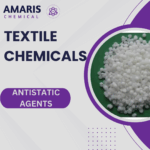 Antistatic Agents
Antistatic Agents
 Admixtures
Admixtures Waterproofing Agents
Waterproofing Agents Sealants and Adhesives
Sealants and Adhesives Curing Compounds
Curing Compounds Concrete Repair Chemicals
Concrete Repair Chemicals Anti-Corrosion Coatings
Anti-Corrosion Coatings
 Surfactants(cleaning)
Surfactants(cleaning) Builders
Builders Enzymes
Enzymes Solvents (Cleaning)
Solvents (Cleaning) Fragrances
Fragrances
 Electronic Chemicals
Electronic Chemicals Catalysts
Catalysts Lubricants
Lubricants Photographic Chemicals
Photographic Chemicals Refrigerants
Refrigerants Automotive chemicals
Automotive chemicals Pyrotechnic Chemicals
Pyrotechnic Chemicals
 Biodegradable Surfactants
Biodegradable Surfactants Bio-based Solvents
Bio-based Solvents Renewable Polymers
Renewable Polymers Carbon Capture Chemicals
Carbon Capture Chemicals Wastewater Treatment Chemicals
Wastewater Treatment Chemicals
 Pigments
Pigments Solvents(paint)
Solvents(paint) Specialty Coatings
Specialty Coatings Binders/Resins
Binders/Resins Additives
Additives Driers
Driers Anti-Corrosion Agents
Anti-Corrosion Agents Functional Coatings
Functional Coatings Application-Specific Coatings
Application-Specific Coatings
 Fresh Herbs
Fresh Herbs Ground Spices
Ground Spices Whole Spices
Whole Spices Spice Blends
Spice Blends Dried Herbs
Dried Herbs
 Leavening Agents
Leavening Agents Dough Conditioners
Dough Conditioners Flour Treatments
Flour Treatments Fat Replacers
Fat Replacers Decoratives
Decoratives Preservatives(baking)
Preservatives(baking)
 Plasticizers & Softeners
Plasticizers & Softeners Reinforcing Agents
Reinforcing Agents Adhesion Promoters
Adhesion Promoters Vulcanizing Agents
Vulcanizing Agents Antidegradants
Antidegradants Blowing Agents
Blowing Agents Fillers & Extenders
Fillers & Extenders Accelerators & Retarders
Accelerators & Retarders

